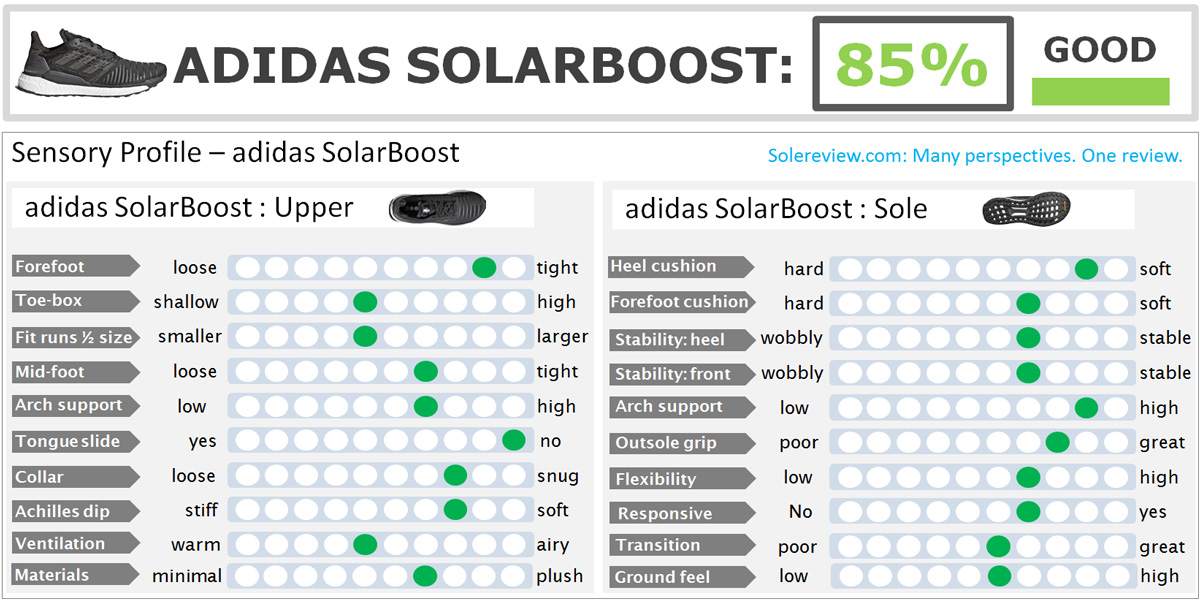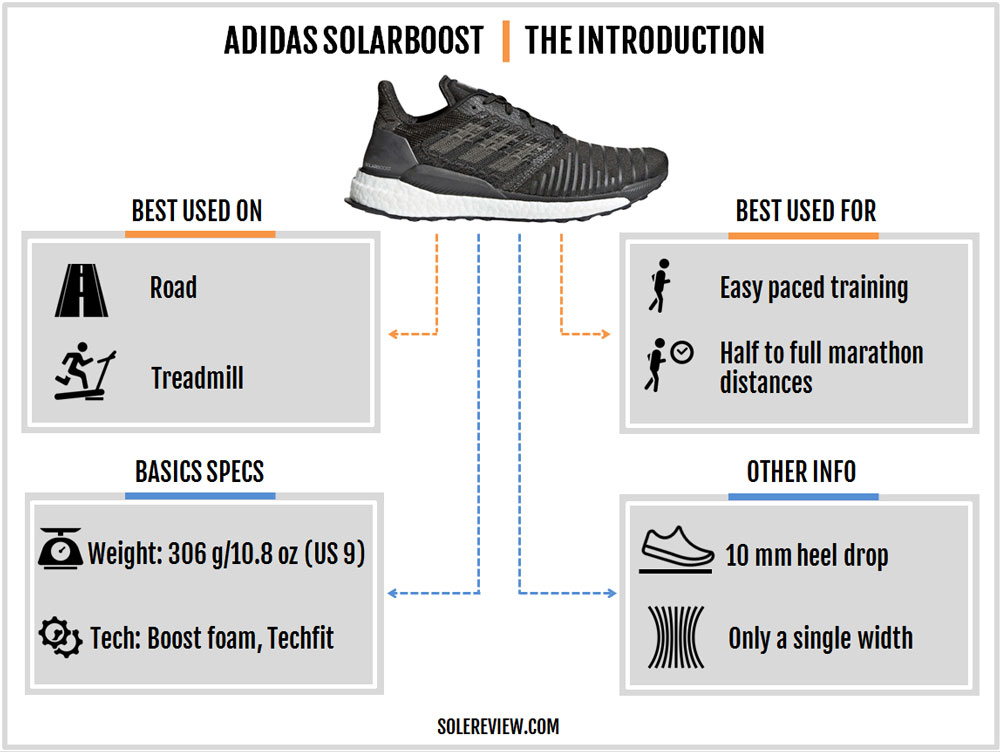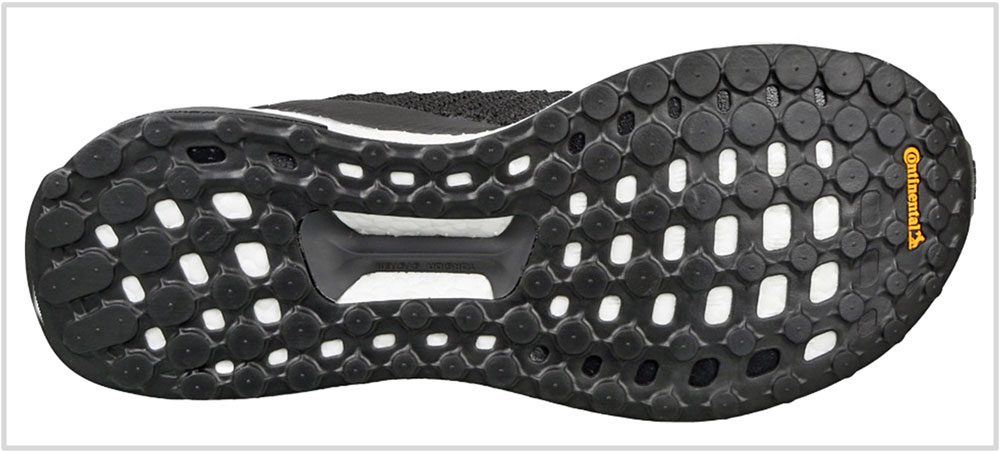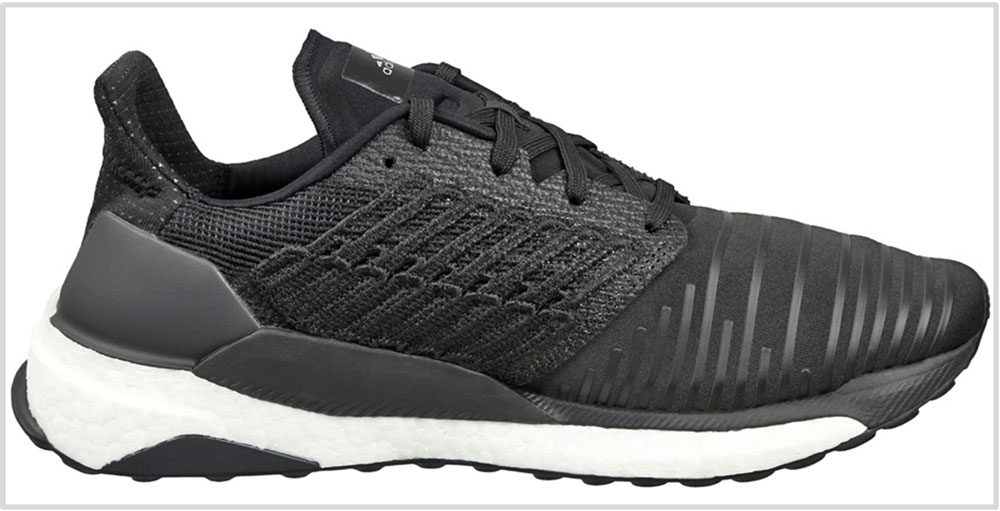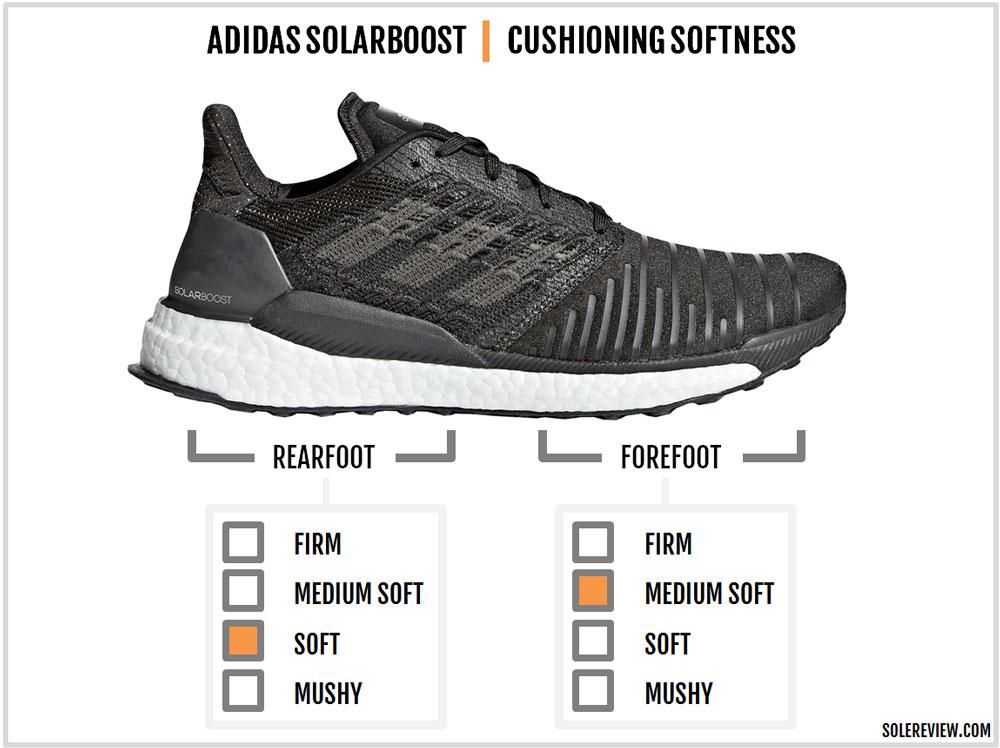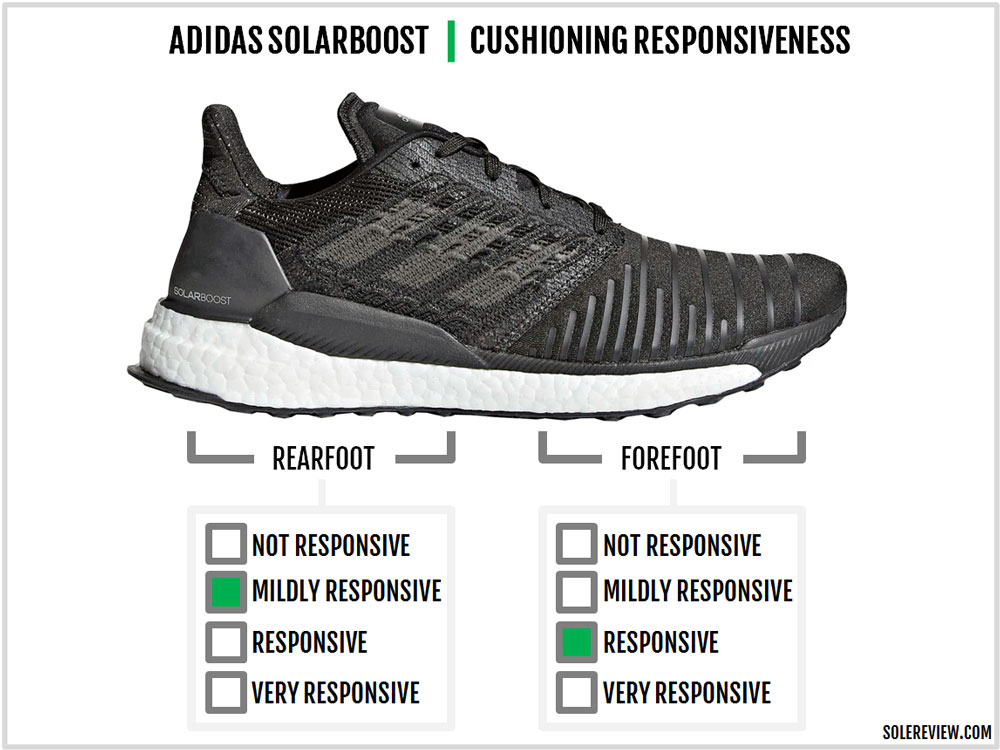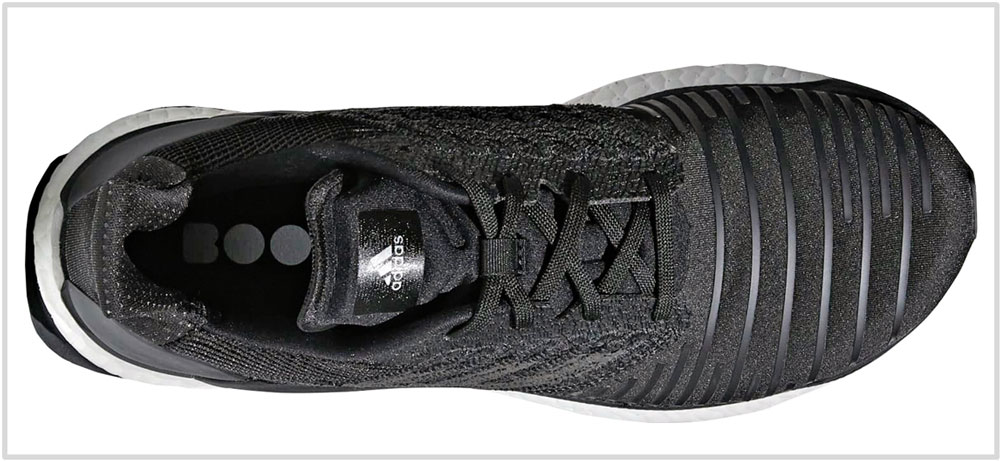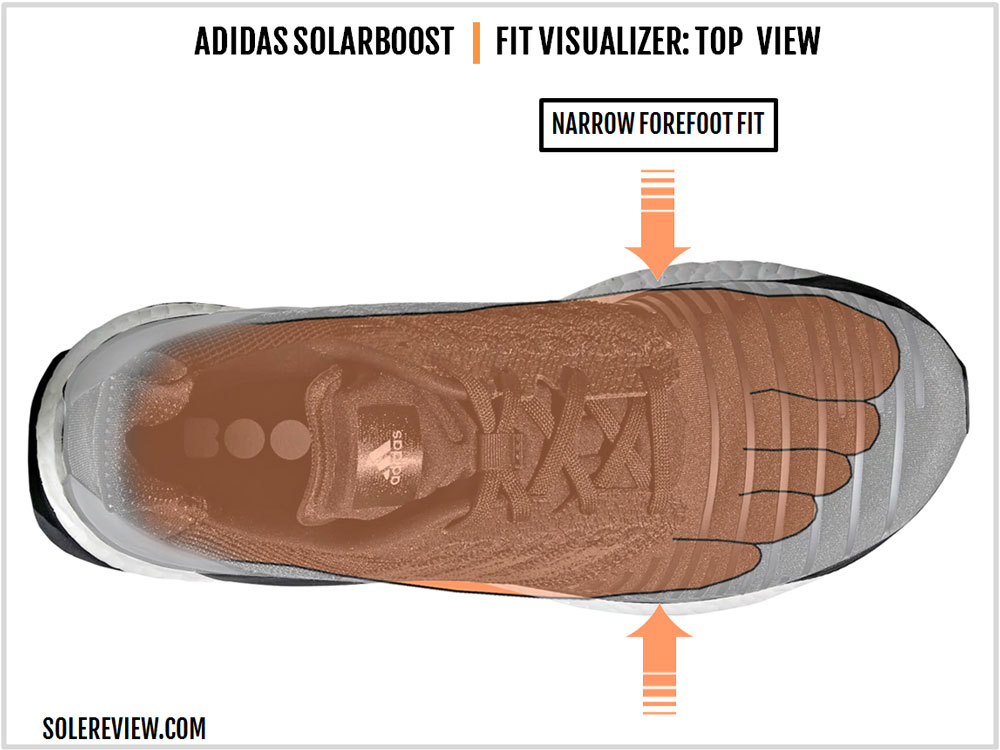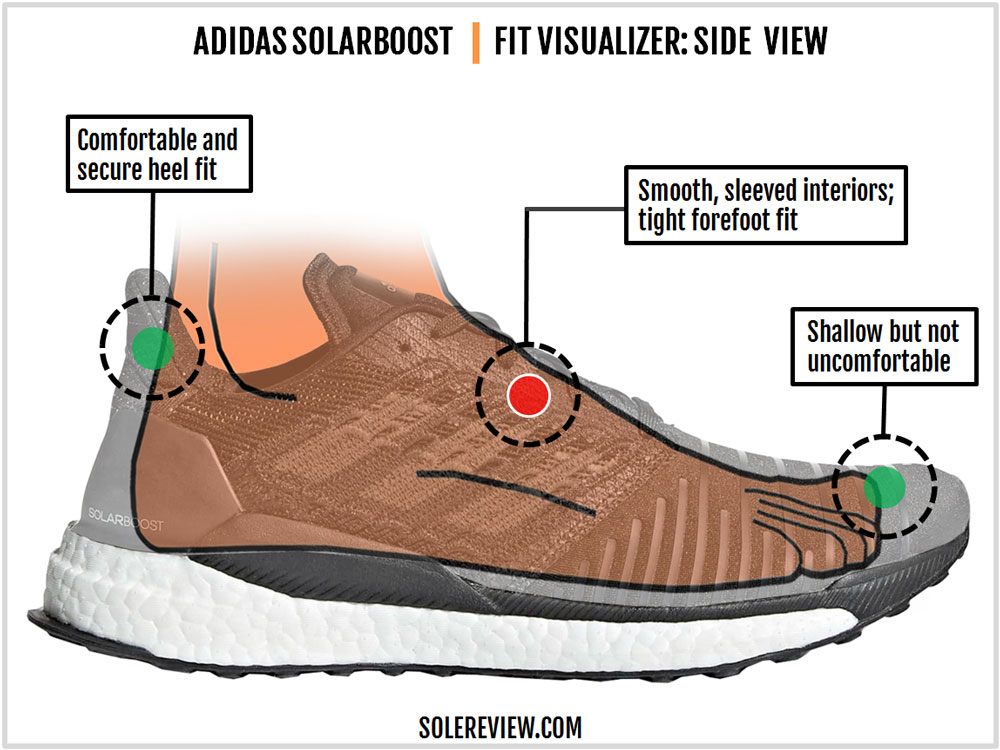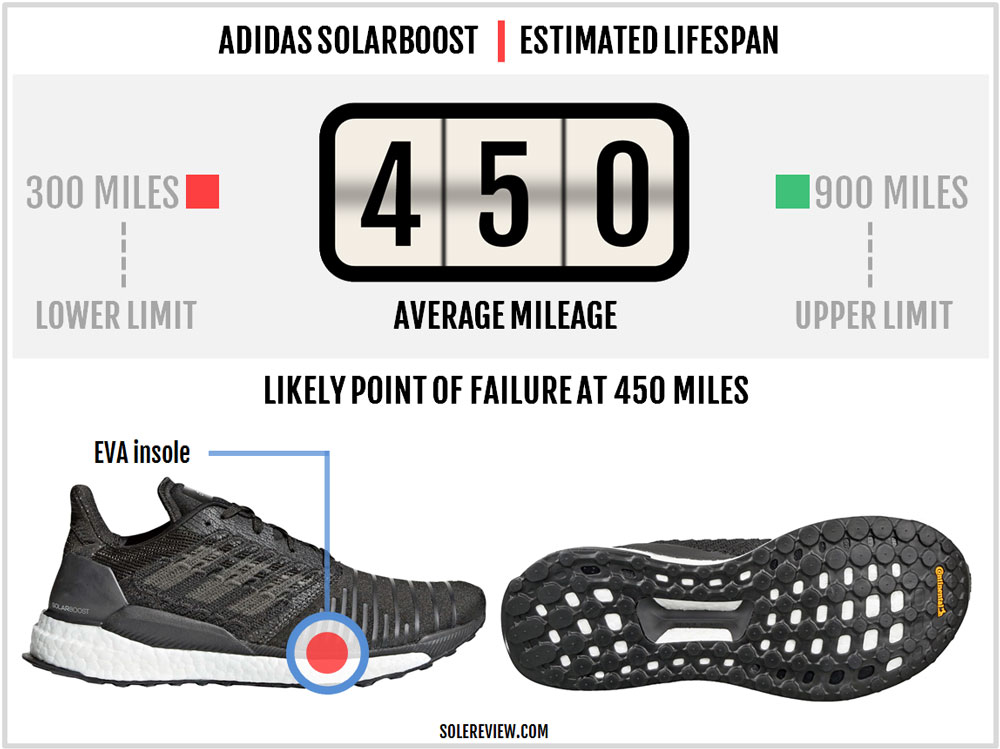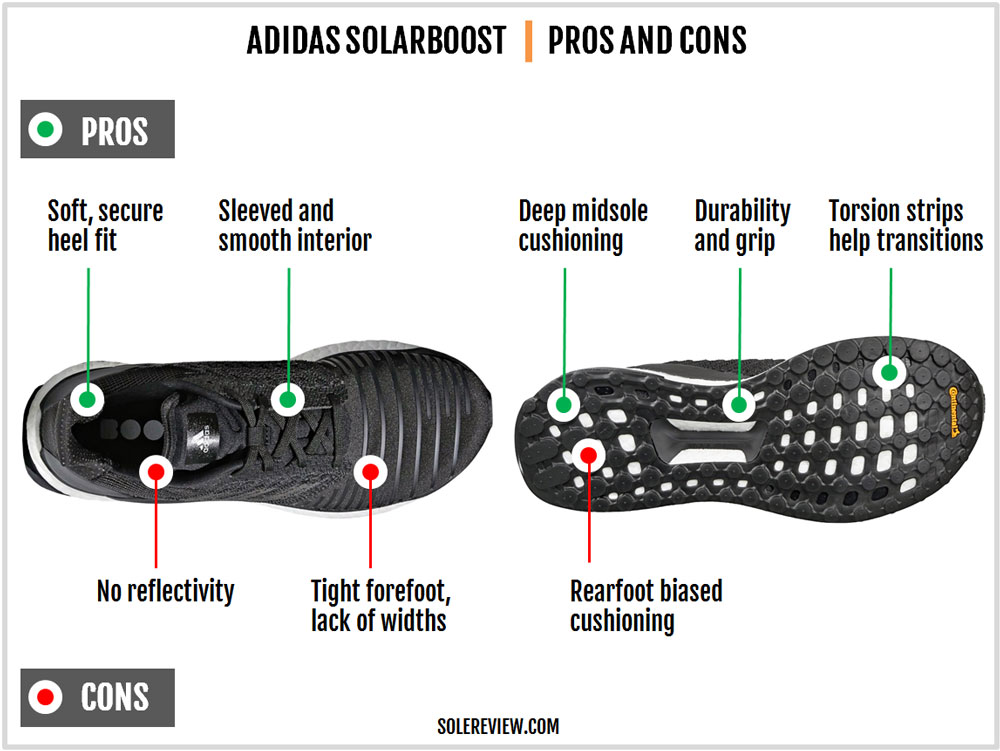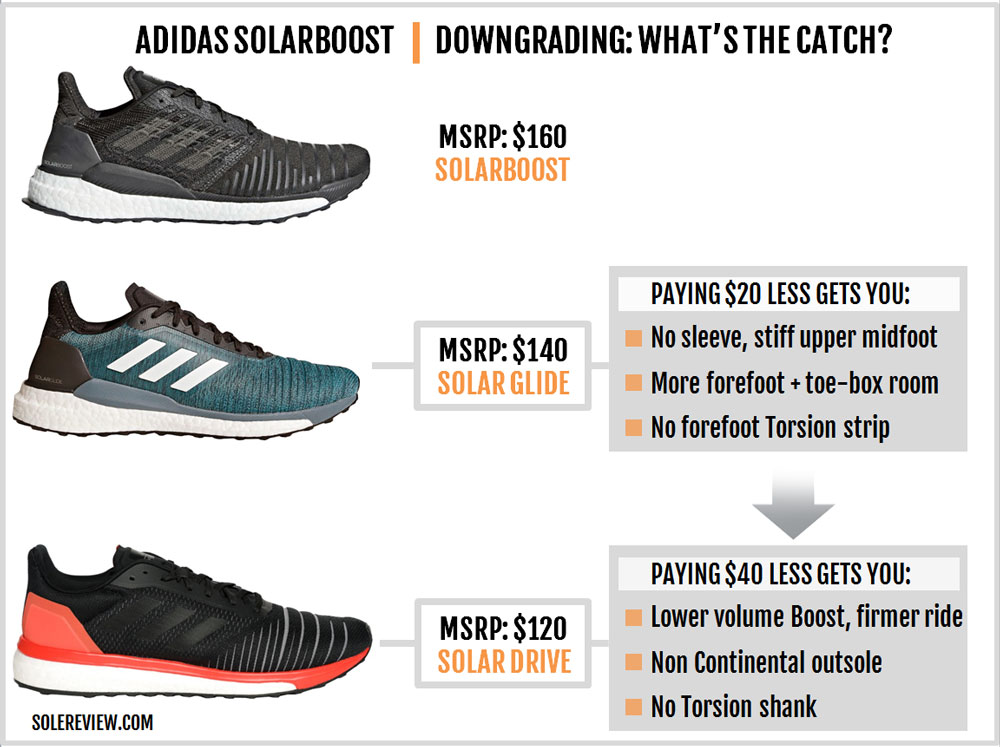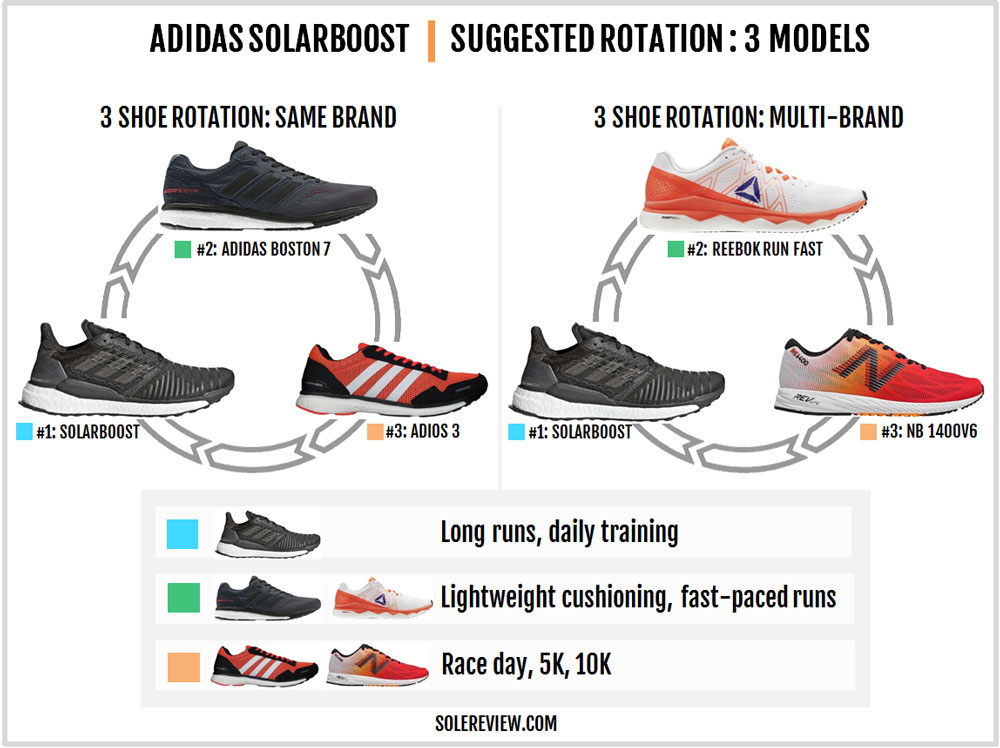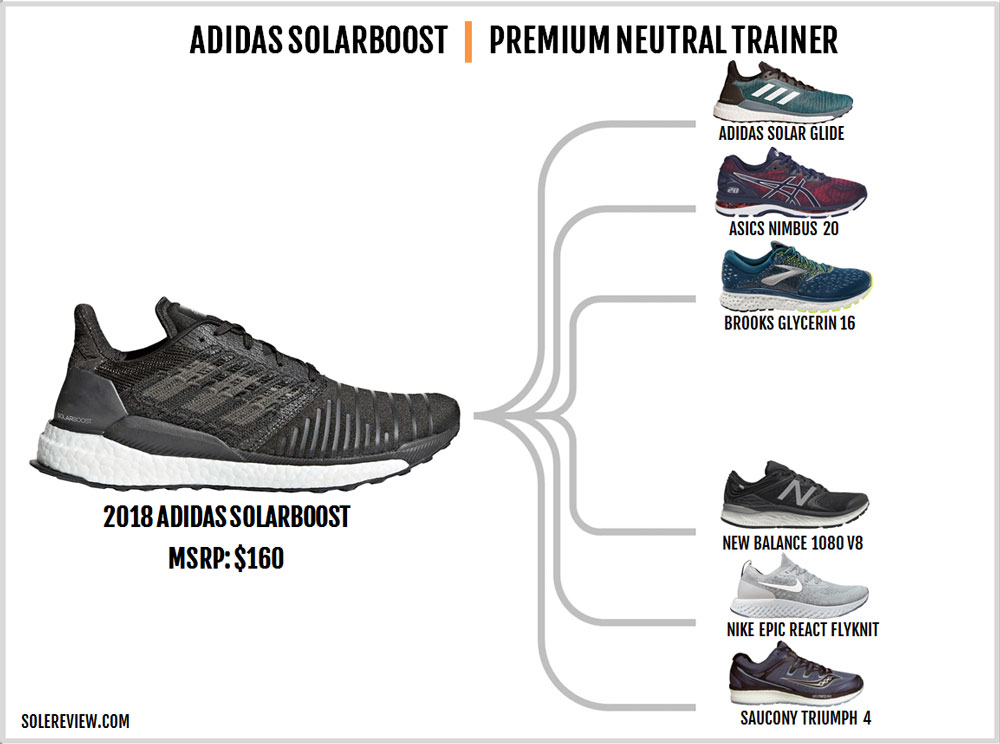INTRODUCTION
For a long time, many adidas running shoes fit into a clearly defined construct. Racing shoes were covered by the ‘adizero’ umbrella. Premium daily trainers had the ‘adistar’ branding.
The Supernova line was somewhere in between. Lastly, the Response collection was positioned as the entry into adidas performance running. This arrangement continued long after adidas ditched the ‘Formotion’ crash pad and moved many of its shoes to the Boost platform.
Even the ‘Response’ line carried over the name, albeit with a Boost midsole. Later, adidas introduced the Energy and Ultra Boost as stand-alone products.
The year 2018 marks the end of the Adistar/Supernova/Response series.
The Adistar franchise dropped off the map three years ago. The adistar Boost was a peculiar product, a combination of the new and the old – the heel Formotion cushioning system was integrated into a Boost foam midsole.
This year, the Supernova and Response series become historical footnotes. The new ‘Solar’ categorization now spans across multiple price-tiers, starting with the $120 (US Retail) Solar Drive and all the way to the $160 SolarBoost.
The $140 Solar Glide bridges both the models and is a replacement for the last year’s Supernova. There’s also an ‘ST’ version available, a mild-support Solar Glide if you will.
The SolarBoost, as you might have already guessed, replaces the Energy Boost. On the lower end (if you can call a $120 shoe that), the Solar Drive happens to be an updated version of the Response Boost LT. The Drive has an identical midsole and outsole (as the Response) underneath a brand new upper.
But wait a minute. Wasn’t the adidas Solar Boost in the news three years ago?
Yes, it was. Back then, the Solar Boost was a quasi-performance shoe which retailed at $100. But it was a unremarkable product, really – considering that it existed alongside a strong line-up of Boost running shoes. After a year or so of tepid sales, the Solar Boost got shelved.
What you see today is a brand new spin on the ‘Solar’ branding, and there’s nothing in common with its 2015 namesake.
Think of the SolarBoost as an improved Energy Boost with the familiar soft heel cushioning and a more comfortable upper. It gets rid of the plastic cage and adopts a softer upper instead. Although the fit is (still) narrow, you no longer have to worry about the Energy Boost’s rigid midfoot.
If you have been fortunate enough to run in one of the older Supernova Glides (versions 6-8) and are wondering if the SolarBoost is a worthy replacement, then you’ll be disappointed.
The previous-gen Supernova Glide is the gold standard by which all neutral daily trainers are measured. Sadly, none of the new Solar models prove to be equals in ride quality. That applies to the Solar Glide and Drive as well.
Sure, you see glimpses of the Supernova’s character in bits and pieces, especially on the Solar Drive. But since running shoes happen to be a sum of parts, everything needs to be a perfect amalgam of design features and materials.
While the new Solar assortment has a lot of good in it, we’re unlikely to encounter the sheer awesomeness of the Supernova Glide 6-8 again.
THE RIDE EXPERIENCE
After your first run in the SolarBoost, you realize that this is very much the successor to the Energy Boost. The reasons are plain to see; like the Energy Boost, the SolarBoost’s midsole uses high-volume Boost foam accompanied by a slew of familiar features.
The Continental outsole is nearly identical to the Energy. A large sheet of rubber is molded in a ‘Stretchweb’ design, a marketing term used to describe the windowed geometry.
The latticed layout improves the multi-directional flexibility of the outsole. This geometry delivers a softer and smoother ride compared to outsoles which have a closed design. The open windows help the outsole and midsole work better together by reducing the stiffness.
The Torsion midfoot shank extends into the rear and forefoot – just like the Energy Boost. This plastic part splits into twin bands under the forefoot and also extends under the heel to form a mild stabilizing element.
adidas has used this small medial post in most of their Boost shoes regardless of their ‘neutral’ or ‘support’ classification. Even the adios 3 has it.
One only realizes how useful the Torsion shank is when you don’t have it. The $120 Solar Drive doesn’t have Torsion, and one misses it terribly.
The thin extensions under the SolarBoost’s forefoot improves the quality of transitions and toe-offs. The forefoot feels snappier and faster with the Torsion ‘fingers’ placed between the outsole and the midsole.
Incidentally, adidas isn’t the only brand with this idea. New Balance uses a variation of this trick in its 890V6 and the Fuel Cell impulse. While the forefoot insert isn’t made of the same material (Pebax) as the Torsion shank, it produces a similar effect.
There’s something new about the SolarBoost (and the Glide), and that’s the elevated midsole rim. The EVA rims rise high on either side of the midfoot and then partially wraps over the heel counter. The rim doesn’t go all the way to the back, so the plastic heel clip sits directly over the Boost softness.
Raised midsole rims aren’t a new thing; the Brooks Transcend has done this for the past several years.
The rims on the SolarBoost and Glide exist only on the periphery instead of being a separate layer over the midsole like the older Supernova did. This observation doesn’t apply to the Solar Drive. On the latter, the rims go all way around the back and also forms a firmer layer over the midsole.
These differences make the Solar Drive run firmer compared to the SolarBoost and the Glide.
Like the Energy Boost, the SolarBoost’s cushioning is loaded under the heel. There is a significant cushioning difference between the rear and the forefoot. The forefoot is padded but lacks the plush softness of the heel.
Several other components contribute to the soft ride quality. The thick EVA insole acts as a cushioned top layer. Below that is a perforated lasting which exposes a lot of Boost foam – this design element automatically increases the ride softness.
By the way, even the Pegasus 35 Turbo has a perforated lasting, something which appears to be inspired by adidas.
It’s worth pointing out that earlier versions of the Energy and Glide Boost did not have a completely perforated lasting. It showed up once the Ultra Boost (which had a latticed strobel to begin with) became a commercial success.
At this point, it’s fairly obvious that the adidas running design team has divided loyalties. The latest Solar line (and even the last year’s Supernova) rides a lot softer than the older Energy and Supernova Glide models.
With an approach which favors cushioning softness over serious performance, it’s evident that adidas is targeting the casual crowd. Want proof? There’s even a Solar Glide x Pharell Williams collab.
This isn’t to say that the new Solar line-up is inferior, it’s just that the shoes feel less business-like.
Hypothetically speaking, it’ll be interesting to see what would happen if the designers and developers of the adizero assortment (adios, Boston, Takumi) worked their magic on the Solar line-up. That’s wishful thinking, so we’ll have to live with the shoe that the SolarBoost is.
The SolarBoost excels when you’re using it for easy-paced (10 min/mile, 6 min/km or slower) daily training runs on the road or treadmill.
If you do not mind the narrow upper, the SolarBoost works for marathon distances. The Boost midsole has plenty of lively comfort no matter what the distance is. For a shoe this cushioned, the level of support is decent. The raised midsole rims keep the midfoot supportive.
The Boost midsole has a tapered construction with a wider lower base. This gives the otherwise unsupported midsole a fair bit of stability; the Boost foam is good at retaining its structure too.
There’s a hint of a lateral ride bias. The EVA rim covers the inner midsole (over the side) more than the outer sidewall, so the lateral side is softer. Otherwise, the overall ride character is fairly neutral.
The Continental rubber delivers superior road traction under dry and wet conditions.
The SolarBoost’s performance is found wanting during faster runs (under 7 min/mile, 5 min/km or up). For rearfoot strikers, the midsole cycles from a very soft heel to a medium-soft forefoot during the gait process.
This results in a slower transition regardless of how one foot-strikes, and this behavior isn’t speed friendly. The heel-loaded cushioning also makes the relatively thinner forefoot more responsive than the rear.
On the other hand, if casual everyday use is all that the SolarBoost is going to be used for, there are very few reasons to worry. It’s an excellent shoe for walking all day, helped by the cushioned ride and smooth interiors.
UPPER FIT QUALITY
The SolarBoost’s upper uses a Techfit mesh for the forefoot – a neoprene-like fabric which was also used on the Energy Boost. This is a clear reflection of the Energy Boost’s design genes.
The physical properties of the SolarBoost’s Techfit mesh differ significantly from the Energy Boost. The mesh lacks elasticity – which is hampered by its inherent structure and the presence of urethane strips over the forefoot. The forefoot looks stretchable but it’s not.
The Techfit mesh and the slim midsole base combine to result in a tight forefoot fit. Even the Energy Boost was narrow fitting, so the SolarBoost’s fit doesn’t come as a surprise.
You should know that adidas does not offer additional widths in its running shoes so it’s a take-it-or-leave-it situation here. It is very puzzling why adidas shies away from offering widths – many of their shoes have wacky fits so all paying customers are entitled to at least a 2E (wide).
The toe-box is shallow yet comfortable. The shorter height is compensated by an internal stiffener and the lack of an external toe-bumper. Despite its narrow fit, we recommend going true-to-size in the SolarBoost.
The SolarBoost’s midfoot is supported by a knit panel which feels a lot more comfortable than the Energy Boost’s plastic cage. The panels are thick and lack stretch but we’ll take that over the plastic abomination any day.
A sleeve is attached to the moderately cushioned tongue and helps make the interiors smooth. It’s worth underscoring that the SolarBoost is the only neutral model in the Solar collection with an inner sleeve; the Glide and Drive are sleeveless.
We love the SolarBoost’s heel fit and feel. The upper lacks a hard internal counter (the Energy had one), so the heel has a gentle yet secure hold. Support is delivered by the split plastic clip which clasps either side of the heel. The raised midsole rims over the midfoot also help.
The extended collar lip reduces the possibility of Achilles chafing while providing a secure grip. The textile lining is soft with plenty of foam padding.
As a sum of components, the SolarBoost’s upper looks and feels cohesive. Nothing feels out of place, and we wish we could say the same about the Solar Glide and Drive. The uppers of the other Solar models feel like they’re cobbled together with parts plucked out of various shoes.
DURABILITY ASSESSMENT
The SolarBoost is as durable as the Energy Boost. In quantitative terms, that would be 450 miles of median lifespan. The Boost midsole is extremely long lasting, and the same applies to the Continental outsole.
The over-engineered upper should hold up pretty well. The EVA foam insole is the weakest link in the chain and will gradually lose its cushioning properties.
PROS AND CONS
The upper fits narrow and lacks optional widths. On the bright side, the interiors feel very smooth. The inner sleeve creates a comfortable and secure midfoot fit, and the heel design produces an equally superlative fit quality.
If you’re a rearfoot striker, there’s plenty of deep cushioning. Forefoot transitions benefit from the extension of the plastic shank, and the Continental outsole is both traction-friendly and durable. The Boost foam retains its cushioning softness even in extremely low temperatures; that’s a big plus.
On the flip side, the heel-biased Boost midsole creates an unequal balance of cushioning. The abundance of softness in the rear is at odds with the relatively slimmer front. Clearly, the SolarBoost is a rearfoot striker’s running shoe.
LOWER PRICED ALTERNATIVE
There are two other neutral shoes in the Solar catalog.
Priced just below the SolarBoost (SB) is the Solar Glide. (SG) The ride is fairly similar which isn’t surprising given the Glide midsole’s strong resemblance to the SolarBoost. Like the latter, Boost is set up in a full-length, high-volume layout. The outsole and Torsion shank are similarly designed as well.
The Glide differs from the SolarBoost in the way it fits. The forefoot is far more spacious, and the mesh is better at accommodating wider feet. The midfoot lacks a sleeve but the tongue stays in place due to the off-center loop.
The Solar Drive is the most affordable of the three, and it comes with notable differences over the SB and SG. The EVA layer covers the rearfoot Boost foam instead of being just a rim. The midsole is also lower volume and 2 mm shorter in height so the net result is a firmer ride.
The Solar Drive lacks a Continental rubber outsole, the Pebax Torsion shank, and the heel bevel. As a result, the transition quality and durability suffers a bit. The Solar Drive has an internal heel counter instead of the plastic clip, so the collar has a stiffer fit and feel.
The Drive’s upper has a lot more reflectivity than the other two, so it’s a superior choice for running under low visibility conditions.
RECOMMENDED ROTATION
The SolarBoost has a soft heel cushioning, so speed runs turn out to be somewhat of a chore. So get something faster – like the Boston 7 or the Reebok Floatride Run Fast, for example.
Though we’ve recommended the adidas adios 3 and the New Balance 1400V6 separately as race-day shoes, you could just buy just one shoe for racing and fast training. Because both the adios and the 1400 aren’t pure racing flats. Relatively speaking, their midsoles have a fair amount of cushioning.
SIMILAR PREMIUM NEUTRAL TRAINERS
The adidas Solar Glide is a close match on the ride quality. The midsole design mimics the SolarBoost so the underfoot feel is very similar. The cushioning is heel-loaded, and other parts like the EVA side-rims and the Torsion shank combine to form a similar personality.
If Nike’s are your thing, the Epic React Flyknit has a snug fitting upper with a high-volume midsole. The Epic isn’t as soft as the Solar and the cushioning feels better distributed along the midsole length. The React material gives it a two-ounce weight advantage over the SolarBoost.
The Brooks Levitate 2 is an updated version of the original Levitate. It’s got a firm and vertically responsive ride due to its Polyurethane midsole. The upper marries a knit construction with traditional comfort elements such as a padded heel and collar.
The Brooks Glycerin 16 is another option. The Glycerin’s midsole is made of 100% DNA Loft, a foam which appears to be a synthetic rubber blend. The ride isn’t too soft; the Glycerin maintains a healthy balance of cushioning and support.
A firmer version of the Boost foam is available on the Saucony Triumph ISO 4 in the form of an Everun midsole. The upper has more room than the SolarBoost along with optional widths. The Triumph feels bottom heavy but it weighs the same as the SolarBoost.
The Asics Nimbus 20 is a conventional neutral trainer. The midsole has a Gel-EVA-shank-dual-density design which delivers a firmer ride than the SolarBoost.
Given the company the New Balance 1080V8 keeps, its upper fit and choice of widths are the only reasons you should buy it. The 1080’s interior space has excellent proportions, and New Balance doesn’t stop at that – it throws in four widths for good measure. The ride is very cushioned but rather ordinary. That’s no surprise, considering that the Fresh Foam is just a little more than a regular EVA midsole.
| Do you own this shoe? Improve this review by sharing your insights – submit a review here. |

